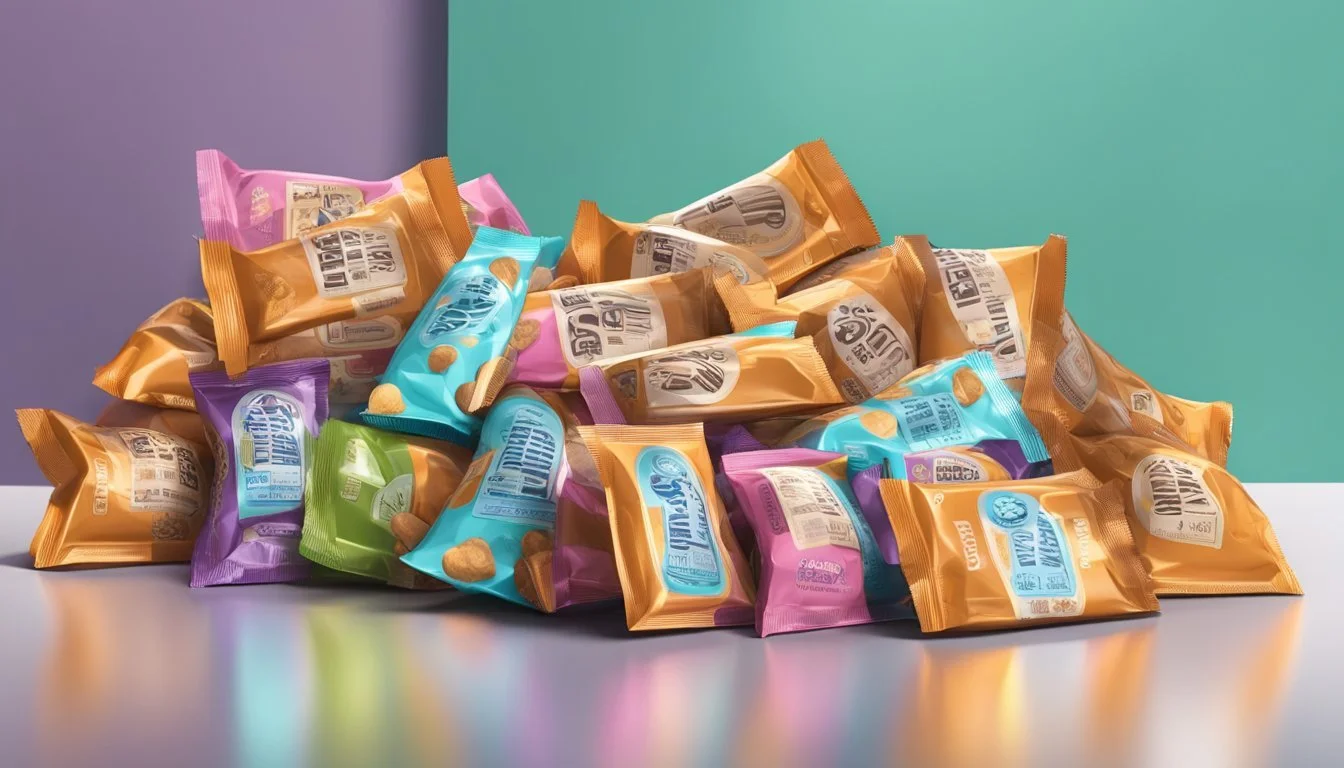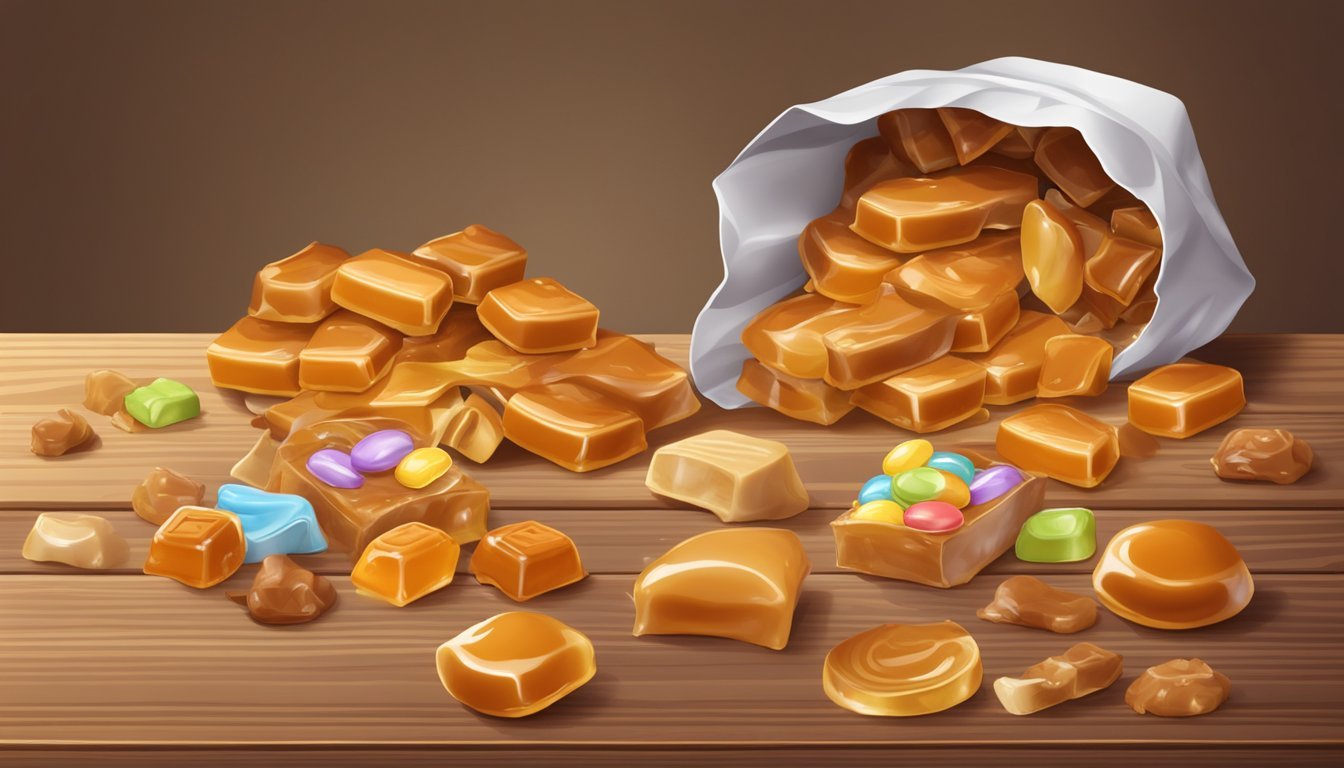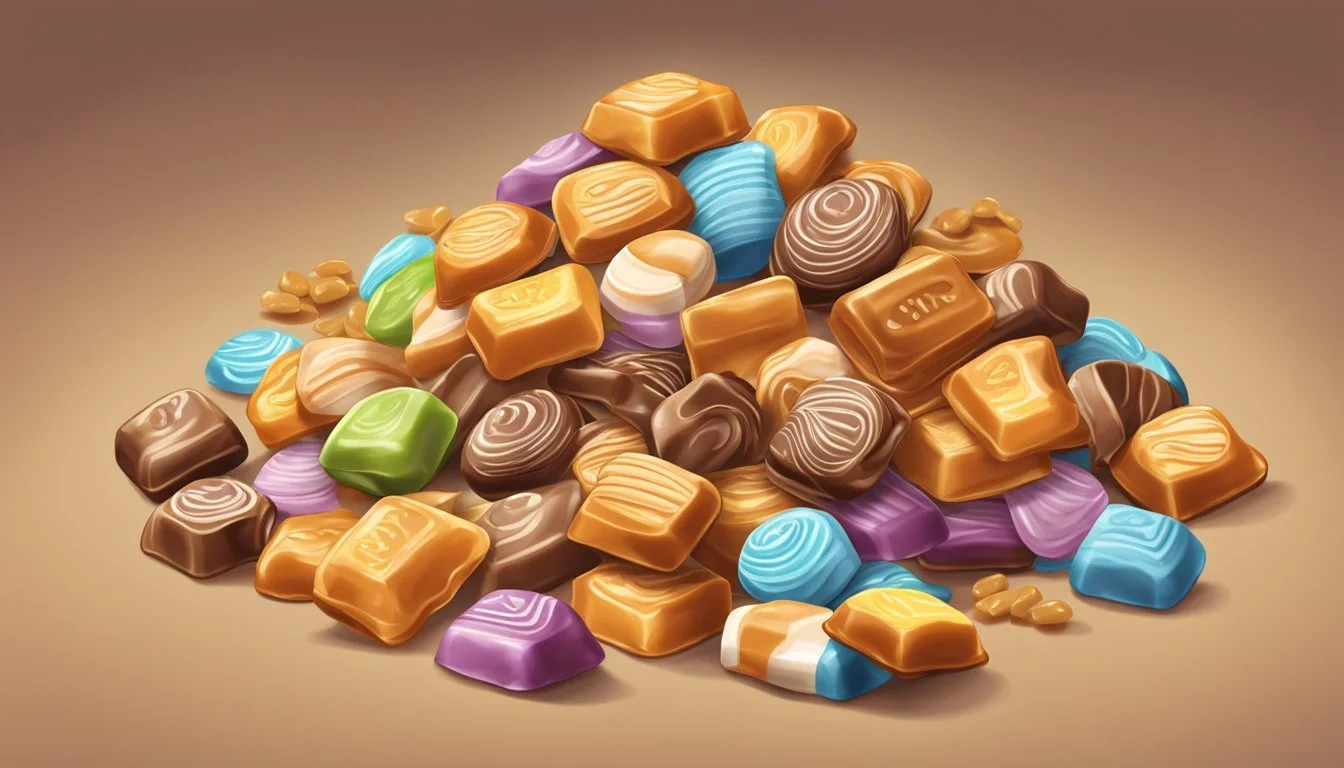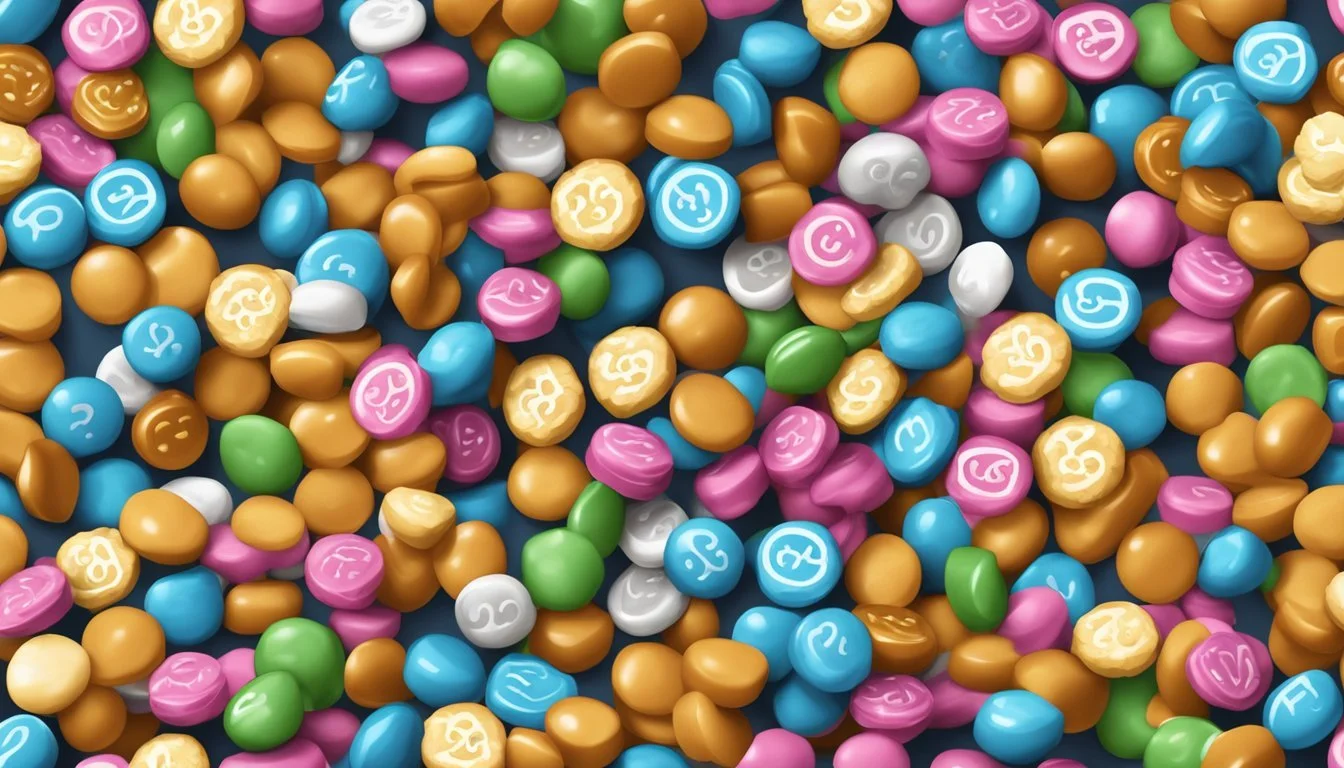Do Caramel Candies Expire?
Understanding Shelf Life and Storage Tips
Caramel candies, like many other sweet treats, have a shelf life that can vary based on their ingredients and storage conditions. Yes, caramel candies do expire. Store-bought caramels generally come with a shelf life ranging from 4 to 12 months. They can retain their best quality slightly beyond their expiration date if stored in a cool, dark place.
Signs that caramel candies have gone bad include mold, a strange odor, or an off taste. Caramels with preservatives typically last longer than those made with all-natural ingredients. For those looking to extend the shelf life of their caramel candies, freezing them can be a viable option, allowing the caramel to remain enjoyable for up to three months.
Proper storage is key to maintaining the quality of caramel candies. Keeping them at room temperature away from light and heat can help prolong their life. Given these considerations, understanding how to store caramel candies properly can ensure a longer-lasting sweet treat.
Understanding Caramel
Caramel is a popular confectionary known for its distinct taste and texture. It is made from simple ingredients, yet there are various types that each have unique qualities.
Composition and Types
Caramel typically consists of sugar, butter, cream, vanilla, and sometimes salt. The process usually involves heating the sugar slowly until it melts and turns golden brown. This is combined with butter and cream to achieve the final product. There are several types of caramel, including chewy, hard, and soft varieties. Chewy caramel has a dense and sticky texture, while hard caramel is brittle and can snap easily. Soft caramel, on the other hand, is creamy and smooth.
Different types of caramel can be used in various applications such as fillings, toppings, or standalone candies.
Texture and Flavor Profiles
The texture can range from smooth and creamy to sticky and chewy or even brittle and hard.
The flavor profile of caramel is rich and buttery with a slightly burnt note. Ingredients like vanilla provide additional depth, while salted caramel offers a balanced contrast of sweetness and saltiness. The mouthfeel varies significantly based on the type of caramel, with some melting smoothly in the mouth while others might require a bit of chewing.
This versatility in texture and flavor makes caramel a versatile ingredient in desserts and candies.
Shelf Life and Expiration
Caramel candies can vary significantly in their shelf life and expiration dates. Factors such as whether the caramel is store-bought or homemade, storage conditions, and packaging all play critical roles in how long they remain fresh and edible.
Identifying the Expiration Date
Caramel candies typically come with a best-by date which indicates when the product is expected to be at its peak quality. Store-bought caramels usually have a printed expiration date on the packaging.
Store-bought caramels:
Unopened: 6 to 12 months
Opened: Several weeks to a few months
Homemade caramels:
Room temperature: 2 weeks
Refrigerated: 2 months
Frozen: Up to 12 months
Checking for signs of spoilage, such as changes in texture or appearance, can also help determine if caramel candies are still safe to eat.
Factors Affecting Caramel Shelf Life
The shelf life of caramel candies depends largely on storage conditions. Caramels should be kept in a cool, dry place away from direct sunlight and strong odors.
Storage guidelines:
Cool and dry place: Best for hard caramels and ensures lasting freshness.
Refrigeration: Extends shelf life, especially for homemade caramels.
Freezing: Long-term storage solution but may affect texture.
Packaging also matters. Air-tight containers or original packaging can help prevent moisture and contamination. Each type of caramel, from hard candies to caramel sauces, has specific storage needs to maximize their shelf life.
Proper Storage Solutions
Proper storage can significantly extend the shelf life of caramel candies. Both storage conditions and the choice of containers are crucial for maintaining their quality and freshness.
Storage Conditions for Longevity
Caramel candies should be stored in a cool, dry place to maintain their texture and flavor. Room temperature is ideal, but it's important to avoid heat sources and direct sunlight. High temperatures can cause caramel to melt or become sticky, while humidity can lead to spoilage.
Fridges can be used if the room is particularly warm, but care should be taken to avoid moisture. Freezers are best for long-term storage, making sure the caramels are sealed to prevent freezer burn. Ensuring the storage area is dry will help prevent mold growth.
Optimal Containers for Caramels
Air-tight containers are essential for preserving caramel candies. Properly sealing keeps out moisture and air, which can degrade the candies over time. Glass jars with tight-fitting lids or plastic containers work well. Ziplock bags are a flexible and effective alternative.
Using food-safe containers helps maintain the candy's freshness, and it is crucial to check that they are completely sealed. Avoiding exposure to strong odors is also important, as caramels can absorb unwanted flavors, impacting their taste.
Preventing and Identifying Spoilage
When it comes to caramel candies, preventing spoilage and identifying signs of it ensure both safety and quality. Spoiled caramel can lead to health issues, so it's important to understand what to look for.
Signs of Spoiled Caramel
Visual Examination:
Check for mold growth, which can appear as black, white, or green specks. Discoloration is another key indicator. Caramel should maintain a consistent golden-brown hue; any darkening or unnatural color changes suggest spoilage.
Smelling and Tasting:
Spoiled caramel often emits an off smell, sometimes sour or musty. If it smells unusual, it's best to discard it. Tasting the caramel can also reveal spoilage: a bitter or sour taste means it's no longer fit for consumption.
Texture Changes:
Watch for changes in texture. Fresh caramel is smooth and slightly firm. If it becomes overly sticky, grainy, or exhibits any other inconsistency, it may be spoiled.
Health Risks of Spoiled Sweets
Foodborne Illness:
Consuming spoiled caramel can cause foodborne illnesses. Common symptoms include nausea, vomiting, diarrhea, and stomach cramps.
Toxins and Mold:
Mold on caramel can produce mycotoxins, which are harmful even in small quantities. These could lead to serious health problems, especially for those with weakened immune systems.
Symptoms to Watch:
After consuming spoiled caramel, if symptoms such as dizziness, fever, or severe abdominal pain occur, seek medical attention promptly. Recognizing these signs early can prevent more severe health complications.
Awareness of these aspects ensures that caramel candies are both enjoyable and safe to consume. Proper storage and regular checks can prevent many of these problems.
Maximizing Freshness and Taste
Proper handling and serving techniques can help maintain the freshness and flavor of caramel candies. Additionally, pairing caramel with the right accompaniments can enhance its deliciousness and make any dessert more delightful.
Handling and Serving Caramel
To keep caramel fresh and flavorful, store unopened packages in a cool, dry place away from direct sunlight. Once opened, it’s best to transfer the caramels to an airtight container to prevent exposure to air and moisture, which can lead to spoilage.
Refrigeration can extend the shelf life of caramels, but ensure they are placed in an airtight container to avoid absorbing odors from other foods. Freezing caramels is also an option for long-term storage; just remember to let them return to room temperature before serving for optimal texture and taste.
When serving caramels, avoid environments that are too warm or humid. Caramel can become sticky and lose its shape in such conditions. To serve, use a small plate or tray and pair with complementary treats like chocolates or apple pie for an enhanced flavor experience.
Enhancing Caramel with Accompaniments
Pairing caramel with other desserts and toppings can take its flavor profile to the next level. A popular choice is to drizzle caramel over pumpkin pie, adding a rich, sweet contrast to the spiced filling. Caramel also pairs well with chocolates, creating a luxurious combination that is hard to resist.
For a more fruity pairing, consider serving caramel with apple pie. The tartness of the apples balances the sweetness of the caramel, creating a well-rounded dessert.
Caramel can also be used as a topping for ice cream, providing a decadent, sweet layer to the dessert. Adding a sprinkle of sea salt on top of caramel can offer a delightful contrast, enhancing both the sweetness and flavor complexity.
These pairings not only maximize the enjoyment of caramel but also add variety to your dessert options.
Special Considerations
When contemplating the shelf life and safety of caramel candies, several factors come into play that can significantly affect their longevity. These include the nature of the caramel—whether homemade or store-bought—and the presence of additives and preservatives.
Homemade Versus Store-Bought Caramels
Homemade Caramel
Homemade caramel generally lacks the preservatives found in commercially produced candies. This means it may spoil more quickly, especially if not stored properly. Homemade caramel should be kept in an airtight container and stored in a cool, dry place. If homemade caramel shows signs of mold, strange odor, or an off taste, it should be discarded immediately.
Store-Bought Caramels
Store-bought caramels, on the other hand, often contain preservatives that extend their shelf life. They are packaged to protect against contamination and are usually labeled with a "best-by" date. Unopened, store-bought caramels can typically last up to three months or more. Proper storage away from heat, light, and moisture can further prolong their usability.
The Role of Additives and Preservatives
Additives
Additives in store-bought caramels can help maintain texture and flavor. Common additives include emulsifiers and stabilizers, which prevent separation and crystallization. These help the caramel retain its chewy consistency and taste over a longer period.
Preservatives
Preservatives are crucial for extending the shelf life of store-bought caramels. Ingredients such as sorbitol and potassium sorbate inhibit microbial growth, making the candy less prone to spoilage. While these chemicals ensure the caramel remains safe to consume, they might slightly alter the flavor compared to homemade versions.
Understanding these elements can assist in selecting and storing caramels to maintain their quality and safety over time.
Tips for Freezing and Thawing
Proper freezing and thawing of caramel candies can ensure they retain their texture and flavor. Follow these steps to extend shelf life and maintain quality.
How to Freeze Caramel
To freeze caramel candies effectively, begin by wrapping each piece individually in wax paper or plastic wrap. This prevents them from sticking together.
Next, place the wrapped candies in a freezer-safe plastic bag or airtight container. Squeeze out excess air to avoid freezer burn. It's helpful to label the bag or container with the date for tracking.
For caramel sauce, portion it into smaller containers or use ice cube trays for more convenient thawing later. Make sure the containers are tightly sealed to maintain freshness.
Store the caramel in the freezer for up to one year. This duration helps keep it cool and fresh until you're ready to use it.
Thawing Caramel Safely
When ready to use, remove the desired amount of caramel from the freezer. If they are individual candies, let them thaw at room temperature for about an hour.
For caramel sauce, transfer the container to the refrigerator and allow it to thaw slowly overnight. This method helps preserve the texture and flavor of the sauce.
Once thawed, you can bring caramel sauce to room temperature by gently heating it. Use a low heat setting to ensure it doesn’t burn or separate. Stir constantly for even warming.
Avoid refreezing thawed caramel as it can negatively affect both texture and flavor. To maintain safety and quality, consume within a few days after thawing.







